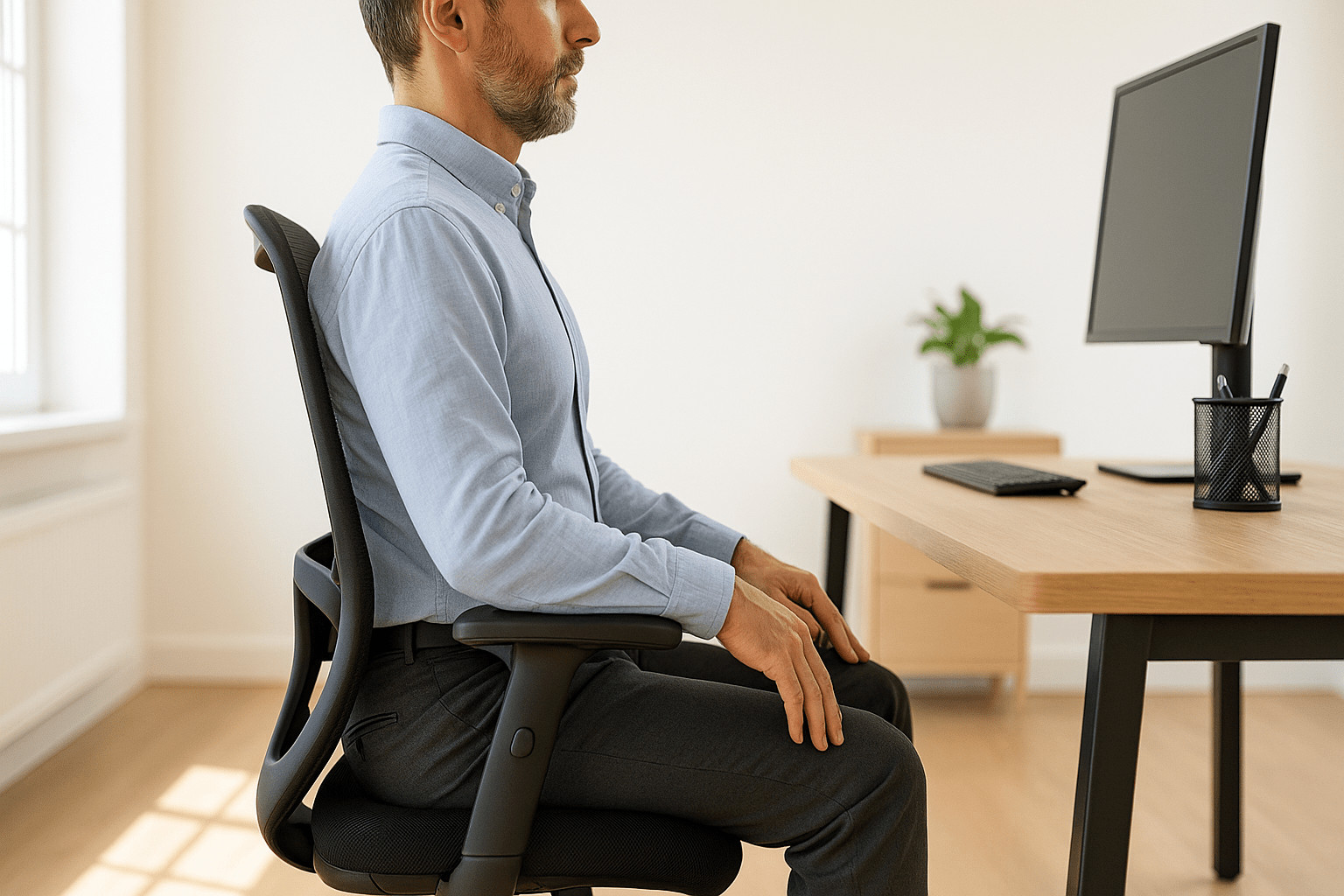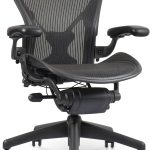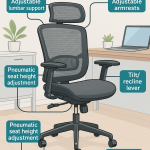Even the best ergonomic chair can hurt your back if it’s not set up correctly. The right adjustments transform your sitting posture, improving comfort, blood flow, and energy. In this step-by-step guide, we’ll show you how to adjust your ergonomic office chair for perfect posture—covering seat height, lumbar position, recline angle, and armrest alignment. Whether you just bought a new chair or want to fine-tune your current one, these adjustments will help you feel better through every workday.

Why Proper Chair Adjustment Matters
An ergonomic chair supports your spine’s natural “S” shape. Incorrect setup leads to slouching, pressure on the lower back, and shoulder strain.
Signs your chair is incorrectly adjusted:
- You lean forward to reach your desk.
- Your feet dangle or knees angle downward.
- You feel tension in your shoulders after an hour of sitting.
To adjust an ergonomic chair for proper posture, set seat height so your feet rest flat, backrest supports your lower spine, and arms sit at 90 degrees relative to the desk.
Step-by-Step Guide to Adjust an Ergonomic Chair
1. Set the Seat Height
Your feet should rest flat, with thighs parallel to the floor.
If your desk is tall, consider a footrest for balance.
Tip: The seat pan should allow about two finger widths of space behind your knees.
2. Adjust Lumbar Support
The lumbar pad should align with your lower back’s inward curve.
If it’s too low, it increases slouching; too high, it pushes your ribs forward.
Example model: The SIHOO M18 provides adjustable lumbar support at an affordable price.
Disclosure: As an Amazon Associate, we earn from qualifying purchases.
3. Tune Seat Depth
Slide the seat pan so your knees stay two inches from the front edge. This avoids pressure on your thighs and boosts circulation.
4. Align Armrests
Armrests should meet your elbows at a 90° angle without lifting your shoulders.
If the chair allows width adjustment, keep arms close to your torso.
5. Set Recline and Tension
A slight recline (100–110°) relieves spinal load.
Adjust tilt tension so you can lean back comfortably without losing support.
6. Check Monitor and Desk Alignment
When seated, your eyes should naturally meet the top third of your screen.
Adjust monitor height before blaming the chair—this alignment ensures your neck stays neutral.
Common Chair Setup Mistakes
- Ignoring seat depth: Causes thigh pressure.
- Arms too high: Shoulders tense and rise.
- Lumbar pad misplaced: Over-supports mid-back.
- No breaks: Even perfect posture needs movement every 30–45 minutes.
How to Maintain Good Posture All Day
- Keep your feet grounded—avoid crossing legs.
- Roll shoulders back gently to open the chest.
- Use short stretch breaks for wrists, hips, and spine.
- Recheck your settings weekly; gas cylinders and cushions shift over time.
Next Steps
Once your chair feels right, test your comfort for several hours of work. Minor tweaks often make a big difference.
Explore our guides:
- Best Ergonomic Office Chairs (hub)
- Affordable Ergonomic Chairs (budget setup)
- Ergonomic Chairs for Back Pain (pain relief tips)
Conclusion — Comfort Is a Habit
Adjusting your chair is not a one-time task; it’s an ongoing habit. As your work style changes—standing more, switching shoes, or altering desk height—your posture needs fine-tuning. The best ergonomic setup is the one you maintain consistently. Keep comfort dynamic, and your body will thank you after every workday.
FAQs
Recheck settings every few weeks—foam compression and gas lift changes can shift posture.
A slight recline (100–110°) reduces spinal pressure and promotes healthy circulation.
Add an external lumbar cushion or rolled towel to fill the lower back gap.






